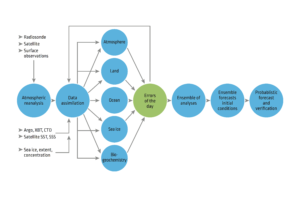About

In 2016, CSIRO embarked on a decadal climate forecasting effort. The project concluded in 2021.
The Challenge
The challenge of the CSIRO Decadal Climate Forecasting Project was to improve and advance the use of multi-year to decadal forecasts to enable Australian industries and regulators to better deal with climate variability and climate extremes. Internationally, there was considerable research investment with the aim of developing useful multi-year to decadal climate forecasts. This endeavour was identified by the World Climate Research Program (WCRP) as a grand challenge in near term climate prediction with the anticipation that useful climate forecasts are attainable. This project contributed to this challenge.
As with all research, the DCFP carried some risk, however, the rewards to the Australian community of delivering useful climate forecasts at the multi-year to decadal timescales carried potentially huge benefits for Australian industries. Decadal forecasting also has potential to help us better manage our natural assets.
The project involved us applying our climate understanding gained through the observations, modelling and process studies to improving and advancing the use of climate forecasts. We also developed develop novel ensemble-based probabilistic climate forecast metrics similar to those currently employed in numerical weather prediction.
Probabilistic assessments were used to characterise the forecast skill, to help identify where to direct our resources, and to evaluate our progress towards delivering better and more useful forecasts. Such assessments also helped direct the development of the climate model (i.e. identification of model bias), improved data assimilation by assessing the value of different observational data streams, and better constrained ensemble initialisation through systematic characterisation of forecast error growth.
Our Mission
Was to improve multi-year to decadal climate forecasts by:
- Advancing fundamental climate research into: where does the predictability of the climate system reside, the processes that give rise to that predictability, and the critical observations that will help us to realise the potential climate predictability
- Applying state-of-art ensemble data assimilation to determine the initial climate state for the forecasts
- Integrating climate processes with the forecasting effort in the development of the climate perturbations used in the ensemble forecasts
Advance the utility of climate forecasts by:
- Closely integrating verification and applications with forecasting effort (targeted evaluation linked with the application)
- Advancing process understanding and process verification to build confidence in the value of forecasts
